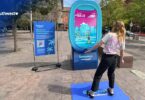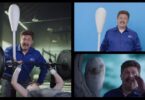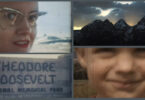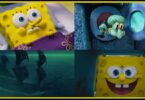Agnes Calka, Editor, Nametag Films
How do you know when you’ve aced a project?
My gut reaction is to respond with something along the lines of “glowing client feedback” and call it a day, but it really boils down to whether or not I’ve met my own expectations. I’ll admit that it’s rare for those two roads to cross, because the way I see it – I could’ve always done better. But I guess I’ll settle for that glowing feedback in the meantime…
How do you stay up-to-date on current tech and trends?
Beyond glancing at a couple of daily tech headlines in my news aggregator, I try not to obsess over what’s next. You can completely immerse yourself in the latest news for tech and trends in the video world, but then you’ll run out of hours in the day. I’m not out to chase after the future, or even the “right now,” because storytelling is bigger than the software and hardware at hand. Adaptation doesn’t always mean tripping over yourself to grab the latest and greatest rig; it usually involves being resourceful.
If you were to offer me the choice of the newest $50K video rig versus a 1960s 50mm Pentax Super-Takumar f/1.4 adapted to my outdated Sony mirrorless, I’m walking away with that Super-Tac. There’s a certain charm and look that modern equipment just can’t replicate, and working with fully manual vintage lenses gives you a deeper reign over what you create. So if you brag about your new camera having a maximum ISO so large that you can properly expose an entire city with a single candle at night, you’re getting a GIF of Tommy Lee Jones declaring “I don’t care” from The Fugitive in return.
Who would be your dream client?
He’s no longer just a dream, and we’re already working on our own passion projects in the background. (Sorry, Keanu.)
What’s your top video editing software?
Premiere and I have an ongoing love-hate relationship. My first serious ex, Final Cut Pro, became too desperate to stay young and hip, all the while losing his down-to-earth charm. And don’t get me started on my very brief affair with Avid Media Composer – someone set us up on a blind date – he was too old for me, and utterly unwilling to embrace change. Lately, I’ve been flirting with DaVinci Resolve Studio, so we’ll see where that goes…
What’s the biggest technical challenge you’ve ever faced? How did you overcome it?
“You think codecs are your ally? You merely adopted the encoding software. I was born in it, molded by it…”
What sits behind me is a decade of “what if” scenarios that I’ve eagerly overcome. Maybe this is how moms feel; like, by the time you’ve had your third kid, you’re Wonder Woman and nothing scares you anymore. Yeah, it’s a lot like that. If there’s anything I find satisfaction in doing, it’s solving problems… and playing the MacGyver theme in my head while I do it.
How do you present to clients or stakeholders?
While I’ll be the first to admit that I prefer working with machines over people – I’m a textbook INTJ, after all – I’m well aware of the importance of establishing a positive, memorable working relationship. As a client, you can expect a rustic, Slavic recipe of courtesy, sharp wit, perfectly-timed movie references, creativity, and the technical know-how to accomplish your vision. I will do all I possibly can to set you up for success, but I won’t coddle you.
What would you do if your most important client hated your work?
Wake up, check the clock, and attempt to go back to sleep again.
“Oh no! Anyway…”
Fine, let’s say that in some wild parallel universe, that scenario became a reality. On the one hand, I’d go out of my way to identify the lapse in communication, reevaluate their initial concept, and do everything in my power to make things right. On the other hand, Kenny Rogers can take it from here: “You’ve got to know when to hold ’em. Know when to fold ’em. Know when to walk away, and know when to run.” No matter how consistent and dependable you are, there will come a point at which you’ll encounter your very own “Karen” in the wild. And, well, what’s that Bible verse about dusting off your sandals…?
What does a successful project look like?
Ultimately, what matters most is the final delivery; whatever hiccups happen behind the scenes, if any, on the way to that destination, are teaching points for the future. So a successful project is really a combination of internal growth and a polished product that exceeds the client’s expectations.
Which of your work samples do you consider to be your best work?
The best is yet to come.
Who has influenced you most when it comes to how you approach your work?
When I was a kid, my dad could build a tractor from spare parts, fix just about anything that was broken, and fabricate custom tools to get the job done. So my penchant for tinkering with both hardware and software is largely due to my early mimicry of him. And our nature walks – long before I could waddle around on my own – instilled a sense of curiosity and urge to explore. Much of my childhood was spent taking apart toys and electronics just to put them back together again. I even had a phase where I’d buy flat-pack furniture simply for the thrill of assembling it. I needed to understand how the world worked, one Furby and coffee table at a time. If anyone’s shown me what honest, precise work is, it’s Dad.
What behavior or personality trait do you most attribute your success to, and why?
Preparedness immediately comes to mind. A proverbial tornado could touch down, but you’d still find me zeroed-in on the main objectives, all the while dispensing advice to anyone panicking around me. If there’s anything I can do ahead of time on a project, I absolutely will, because that’s when I’m in my prime to tackle the surprises that can – and often will – arise. Expect the best, but still plan for the worst.










